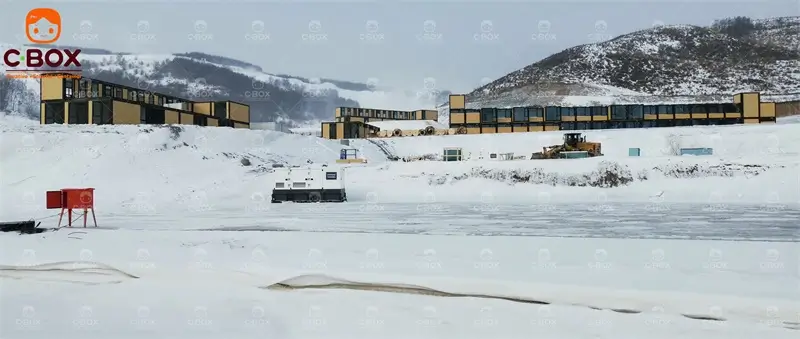Может ли графеновая электрическая нагревательная пленка переопределить модульную конструкцию?
In recent years, with the rise of modular building concepts, container houses have become the preferred solution in construction site camps, emergency rescue, cultural tourism and homestays, etc. with their advantages of rapid assembly, flexible migration, and economy. However, the pain points of heating in traditional container houses in extreme climates always exist: high energy consumption of air conditioning, uneven distribution of hot air, safety hazards of coal-fired heating, and ordinary electric floor heating face the problems of slow heating and high energy consumption. The emergence of graphene electric heating film technology provides a solution that is both energy-saving and intelligent for this scenario.
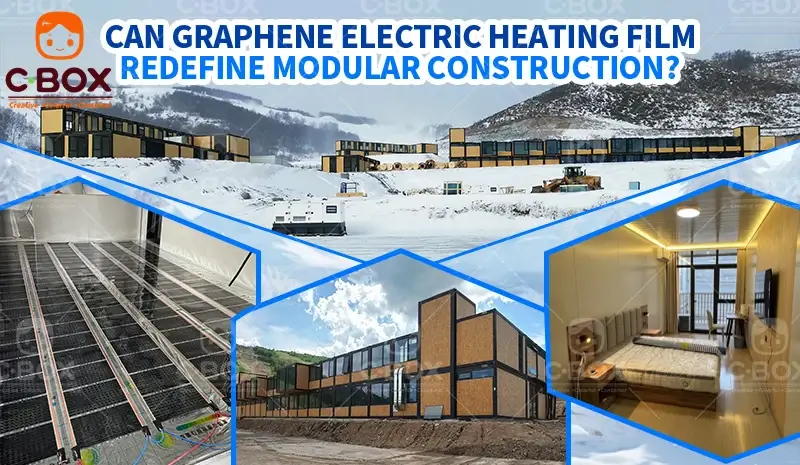
Ⅰ. The heating dilemma and breakthrough point of container houses
Container houses are composed of metal structures, and their thermal insulation performance is inherently insufficient. Traditional heating equipment needs to run for a long time to maintain temperature, resulting in significant energy waste. In addition, the narrow space places higher requirements on the safety of the heat source, and ordinary electric heating films have the risk of local overheating or thermal attenuation due to material limitations. Graphene electric heating film, with its unique two-dimensional honeycomb lattice structure, ultra-high electrical and thermal conductivity and uniform heating characteristics, has become the key to solving the problem.
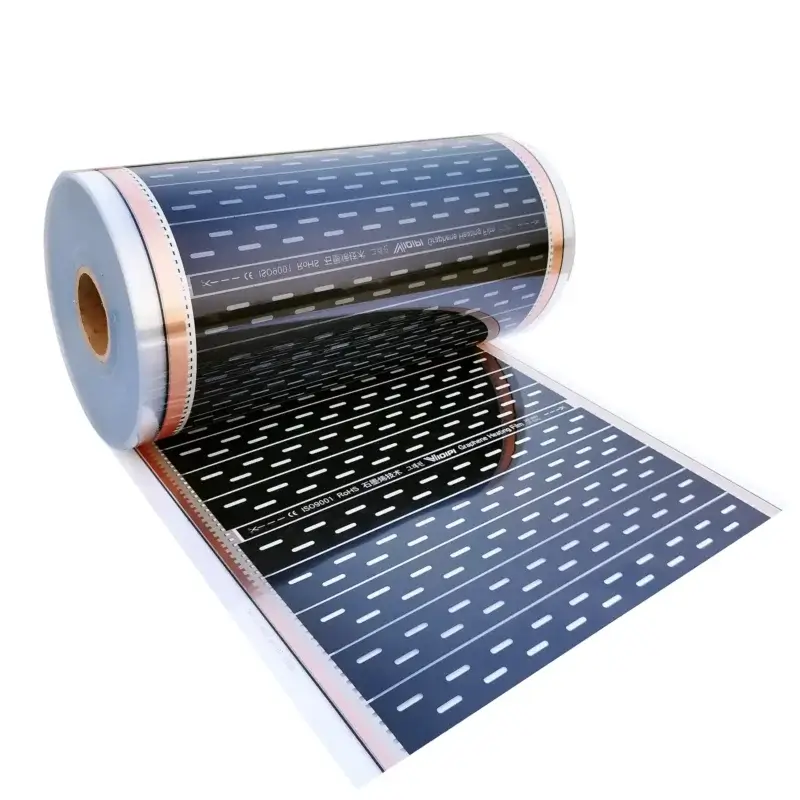
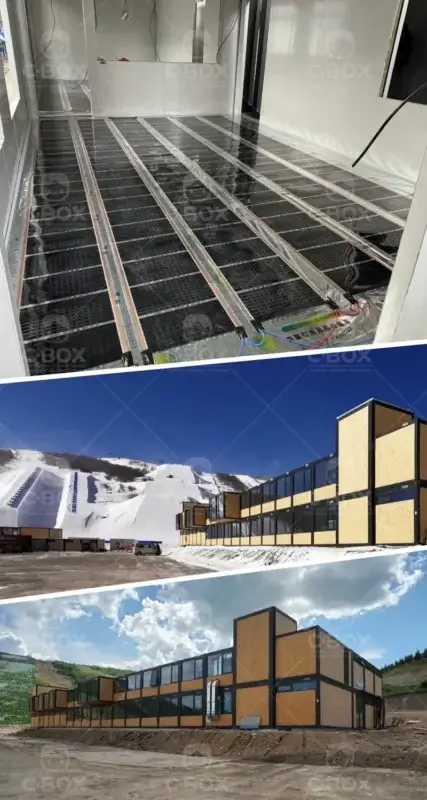
Ⅱ. Graphene electric heating film: the “black technology” core of container floor heating
1. Heating up in seconds, precise temperature control
After the graphene electric heating film is powered on, it can achieve uniform heating of the entire film within 1-3 minutes. The heat is directly radiated to the human body through the floor. The body temperature is 2-3℃ higher than the air temperature, achieving “warm feet and warm body”. With the intelligent temperature control system, it can be controlled in time and area as needed to avoid idle energy consumption.
2. Energy saving and power saving, safe and worry-free
Actual data shows that the electric-heat conversion efficiency of graphene electric heating film exceeds 99%, which saves more than 30% energy compared with traditional resistance wire. Its ultra-low working voltage and waterproof level (IPX7) design completely eliminate the hidden dangers of leakage, and is particularly suitable for humid and changeable outdoor environments.
3. Ultra-thin and flexible, adaptable to transformation
The graphene electric heating film with a thickness of only 0.3mm can be directly laid on the interlayer of the container floor (such as between cement fiberboard and PVC floor), without occupying the floor height, and supports cutting and splicing, perfectly adapting to the 6m/12m standard box. The flexible configuration of 100-200W per square meter can meet the needs of different climate zones.
Ⅲ. From construction site to camp: the landing value of graphene floor heating
Construction site scene
A plateau railway project uses graphene floor heating container dormitories. The daily electricity cost is 60% lower than that of air conditioning in an environment of -15℃, and the worker complaint rate is reduced by 80%. The fast disassembly and assembly characteristics can also be moved as a whole with the progress of the project to avoid duplicate construction.
Ecological and cultural tourism scene
The Inner Mongolia grassland tent camp combines graphene floor heating with photovoltaic energy storage systems to create zero-carbon heating guest rooms. Visitors can still feel the warmth from the floor barefoot in the snow field at -20℃, which has become a highlight of Internet celebrities.
Emergency rescue scene
During the Gansu earthquake rescue in 2023, the temporary container hospital equipped with graphene floor heating achieved 15 minutes of rapid heating, providing the wounded with a stable 28°C treatment environment and avoiding the secondary risk of gas heating.
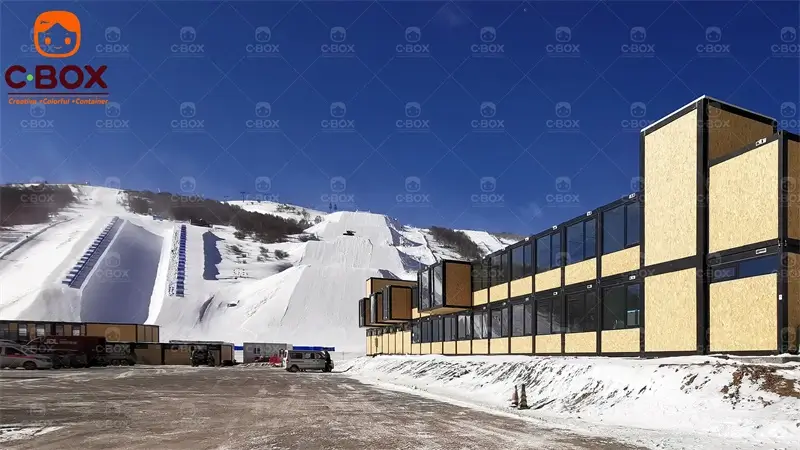
Ⅳ. Future Outlook: Energy Revolution of Modular Buildings
With the popularization of “light storage direct flexible” technology, graphene electric heating film can be further linked with solar power generation and energy storage batteries to build an off-grid smart energy system. This “plug and play” heating solution is redefining the comfort standard of temporary buildings. From construction sites to disaster areas, from camps to mobile cabins, the combination of graphene electric heating film and container houses is not only a victory of materials science, but also a solid step for mankind towards sustainable living.
When the cold steel container meets the nano-level “warm technology”, we see not only the upgrade of heating methods.
For more container house cases, please follow our YouTube channel: @CBoxcontainers
